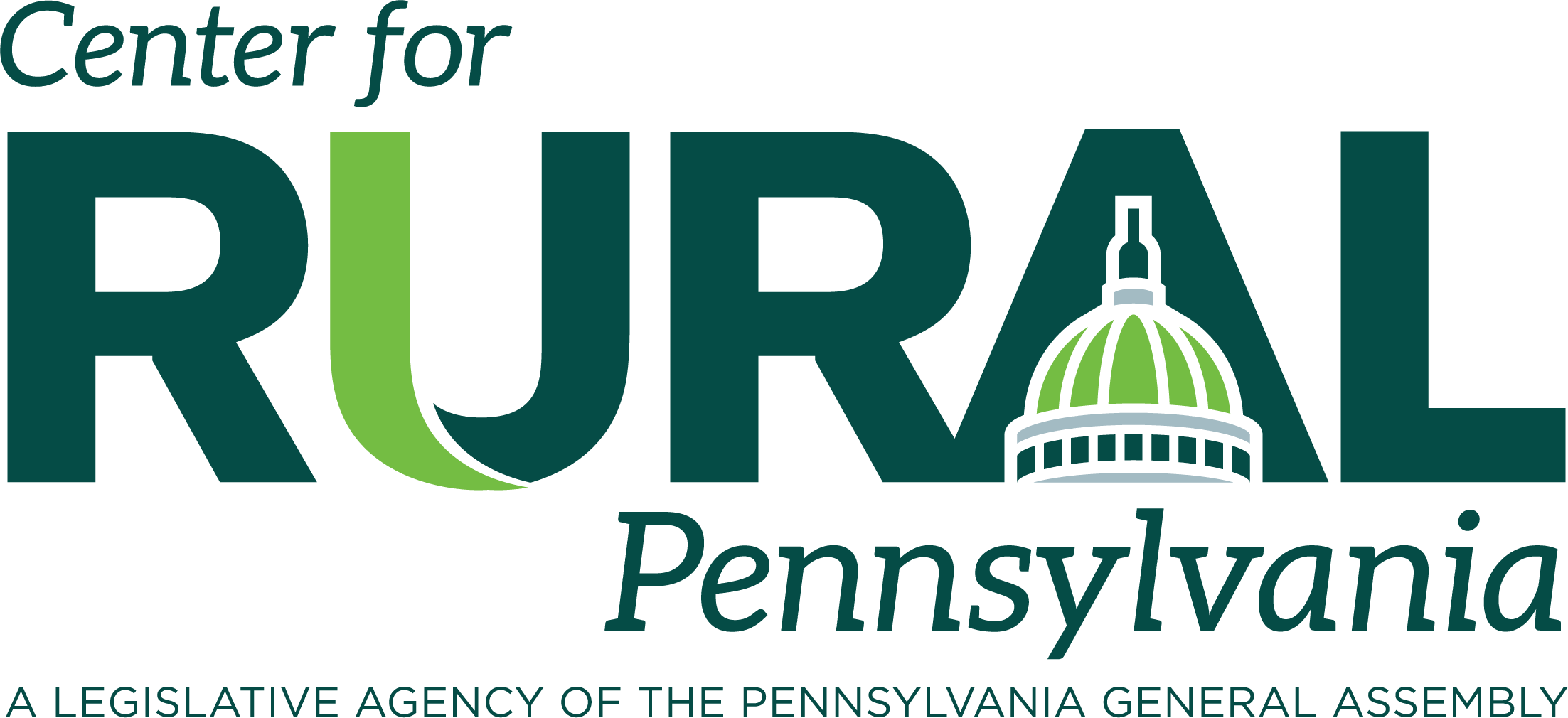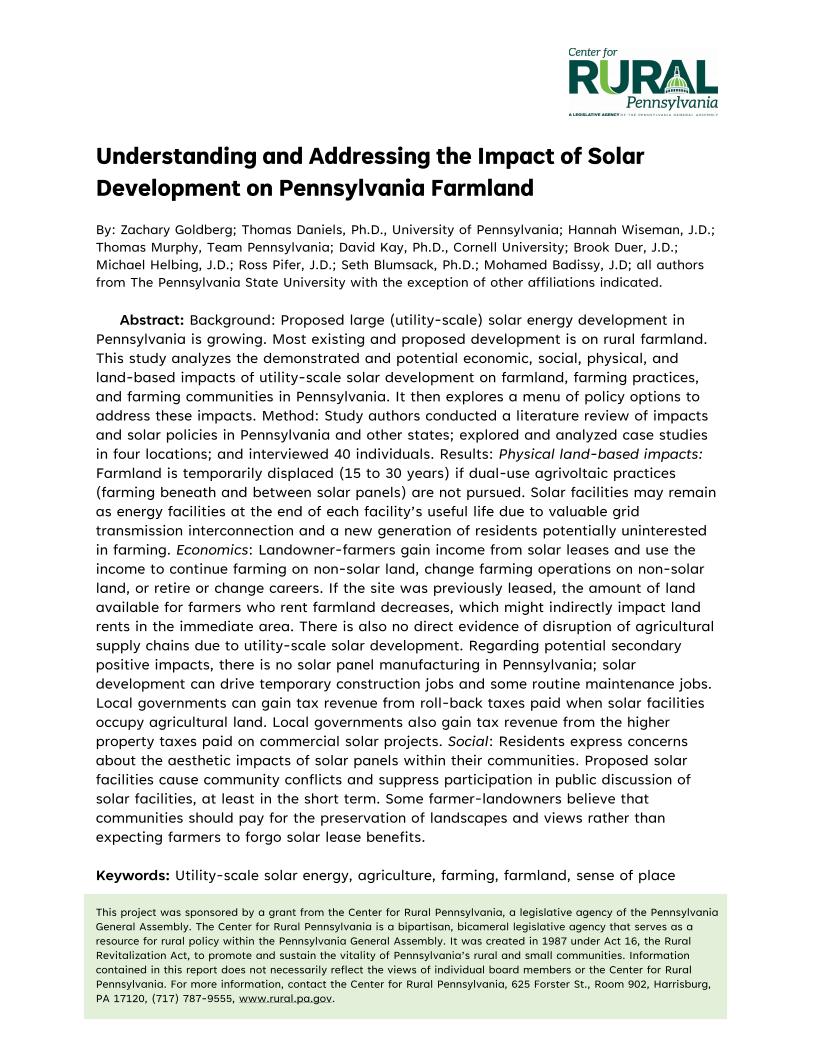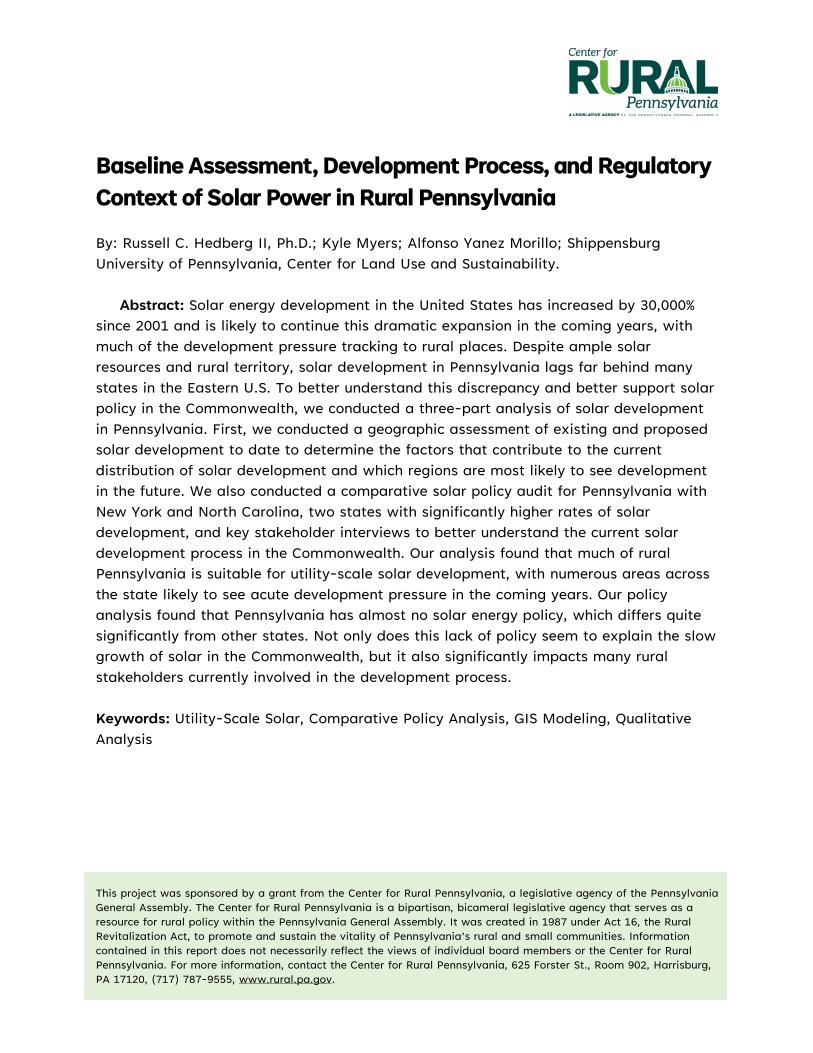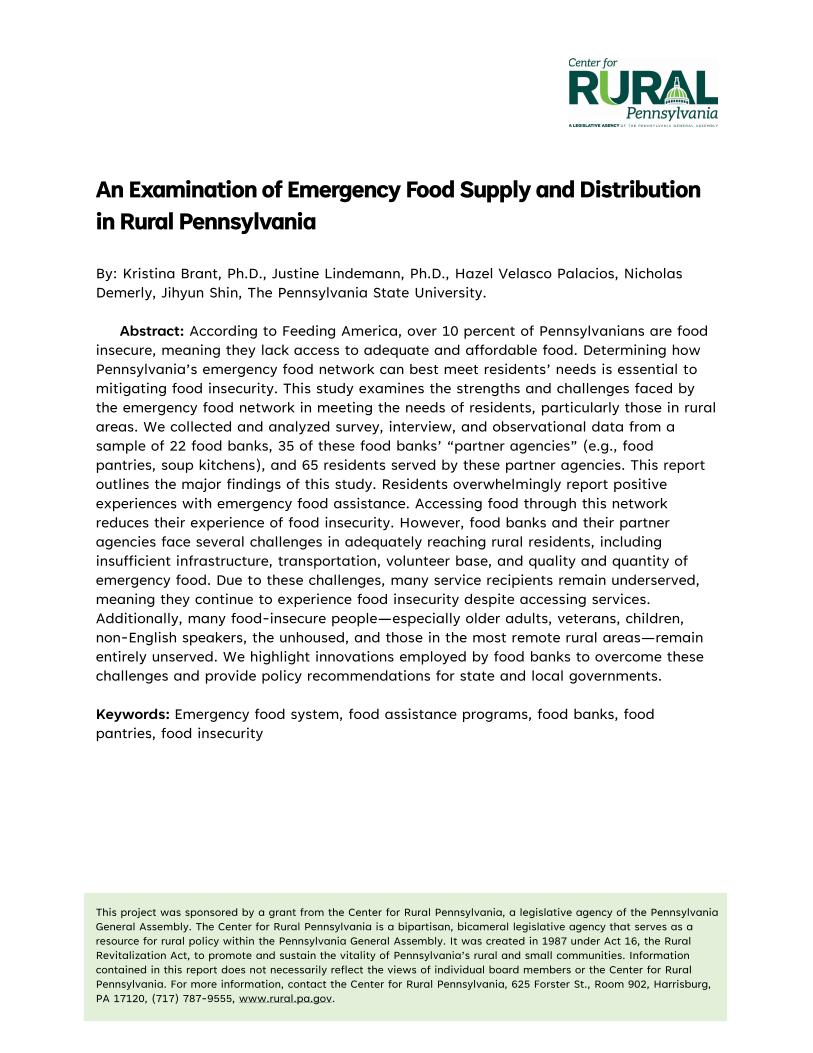Research Reports
2024
Understanding and Addressing the Impact of Solar Development on Pennsylvania Farmland
August 29, 2024 | Agriculture
Many solar energy developers are seeking to build large utility-scale solar facilities in Pennsylvania. Nineteen such facilities are operating or partially operating in the Commonwealth, and as of late 2023, at least nine additional projects were under construction (Pennsylvania Department of Environmental Protection (DEP), 2024). Many additional lands have been leased or purchased for the purposes of utility-scale solar development, pending local government approval and permission to interconnect with transmission lines. The purpose of this study is to identify and analyze the demonstrated and potential economic, social, and physical land-based impacts of utility-scale solar development on farmland, farming practices, and farming communities in Pennsylvania. Based on these findings, the study explores a menu of policy options to mitigate negative impacts and harness the positive outcomes of this development.
Executive Summary
Tags: farming , agriculture , utility-scale solar energy , farmland , sense of place
Baseline Assessment, Development Process, and Regulatory Context of Solar Power in Rural Pennsylvania
August 29, 2024 | Rural People and Communities
Solar energy development in the United States has increased by 30,000% since 2001 and is likely to continue this dramatic expansion in the coming years, with much of the development pressure tracking to rural places. Despite ample solar resources and rural territory, solar development in Pennsylvania lags far behind many states in the Eastern U.S. To better understand this discrepancy and better support solar policy in the Commonwealth, researchers conducted a three-part analysis of solar development in Pennsylvania. First, the researchers conducted a geographic assessment of existing and proposed solar development to date to determine the factors that contribute to the current distribution of solar development and which regions are most likely to see development in the future. They also conducted a comparative solar policy audit for Pennsylvania with New York and North Carolina, two states with significantly higher rates of solar development, and key stakeholder interviews to better understand the current solar development process in the Commonwealth. The analysis found that much of rural Pennsylvania is suitable for utility-scale solar development, with numerous areas across the state likely to see acute development pressure in the coming years. This policy analysis found that Pennsylvania has almost no solar energy policy, which differs quite significantly from other states. Not only does this lack of policy seem to explain the slow growth of solar in the Commonwealth, but it also significantly impacts many rural stakeholders currently involved in the development process.
Executive Summary
Tags: utility-scale solar , comparative policy analysis , gis modeling , qualitative analysis
An Examination of Emergency Food Supply and Distribution in Rural Pennsylvania
June 25, 2024 | Health Care and Human Services
According to Feeding America, over 10 percent of Pennsylvanians are food insecure, meaning they lack access to adequate and affordable food. The emergency food network aims to reduce food insecurity by helping individuals and households better meet their food needs. This network consists of food banks and their local partner agencies (e.g., food pantries, soup kitchens) that, together, collect and distribute food to people in need. Emergency food organizations are non-governmental, but they rely on support from both the federal and state governments. Two federally funded, state-administered programs—The Emergency Food Assistance Program (TEFAP) and the Senior Food Box Program—and two state-funded and run programs—the State Food Purchase Program (SFPP) and the Pennsylvania Agricultural Surplus System (PASS)—provide significant food and funding to food banks. These collaborations allow both the government and network to provide more comprehensive food assistance than either could provide alone. The emergency food network is complex, and there is a need to consider gaps in the network that can leave both people and places either unserved or underserved. This study examines the strengths and challenges faced by the emergency food network in meeting the food needs of Pennsylvania residents, particularly those in rural areas.
Executive Summary
Tags: emergency food system , food assistance programs , food banks , food pantries , food insecurity
Introducing the Center's new journal, Rural Policy: The Research Bulletin of the Center for Rural Pennsylvania.



